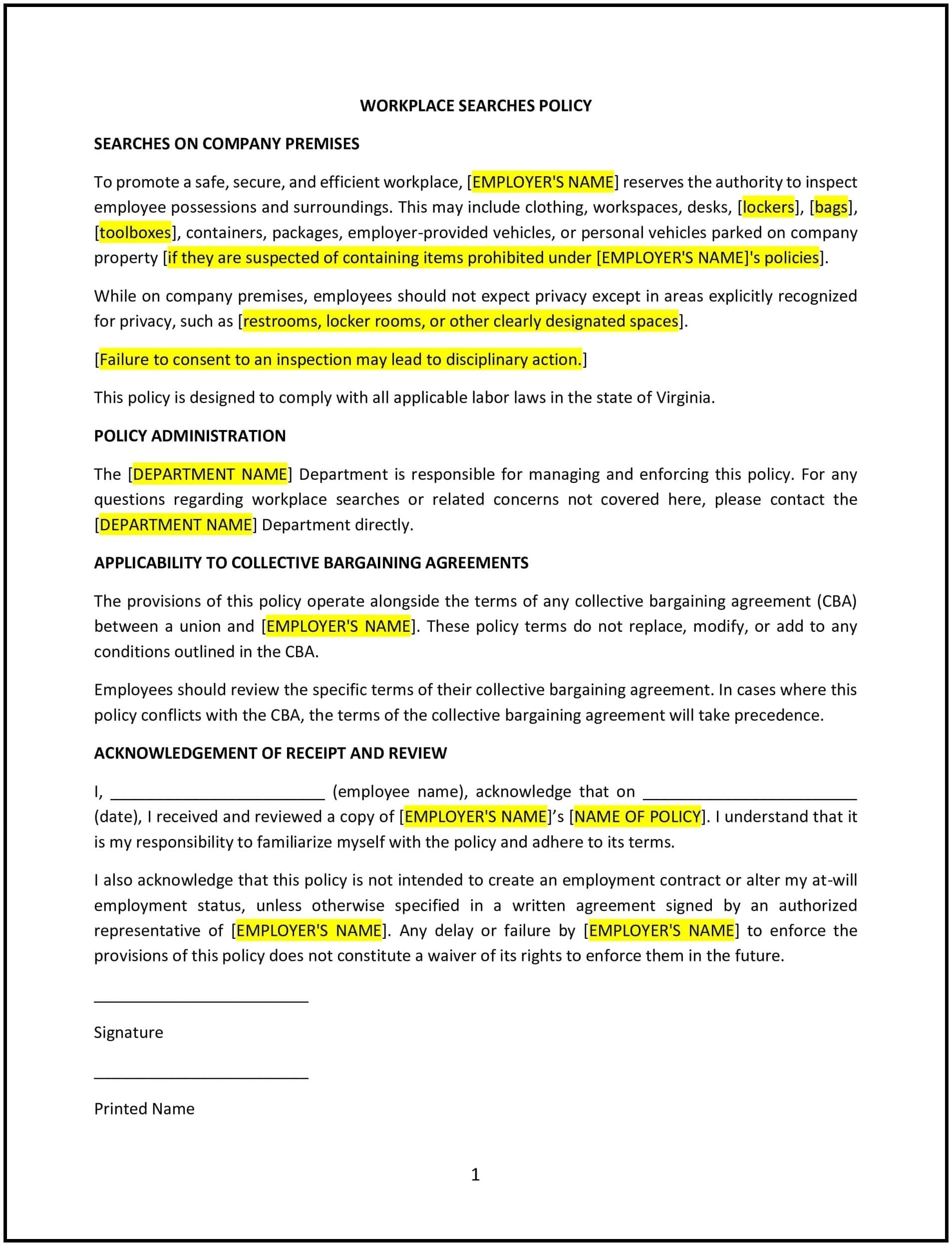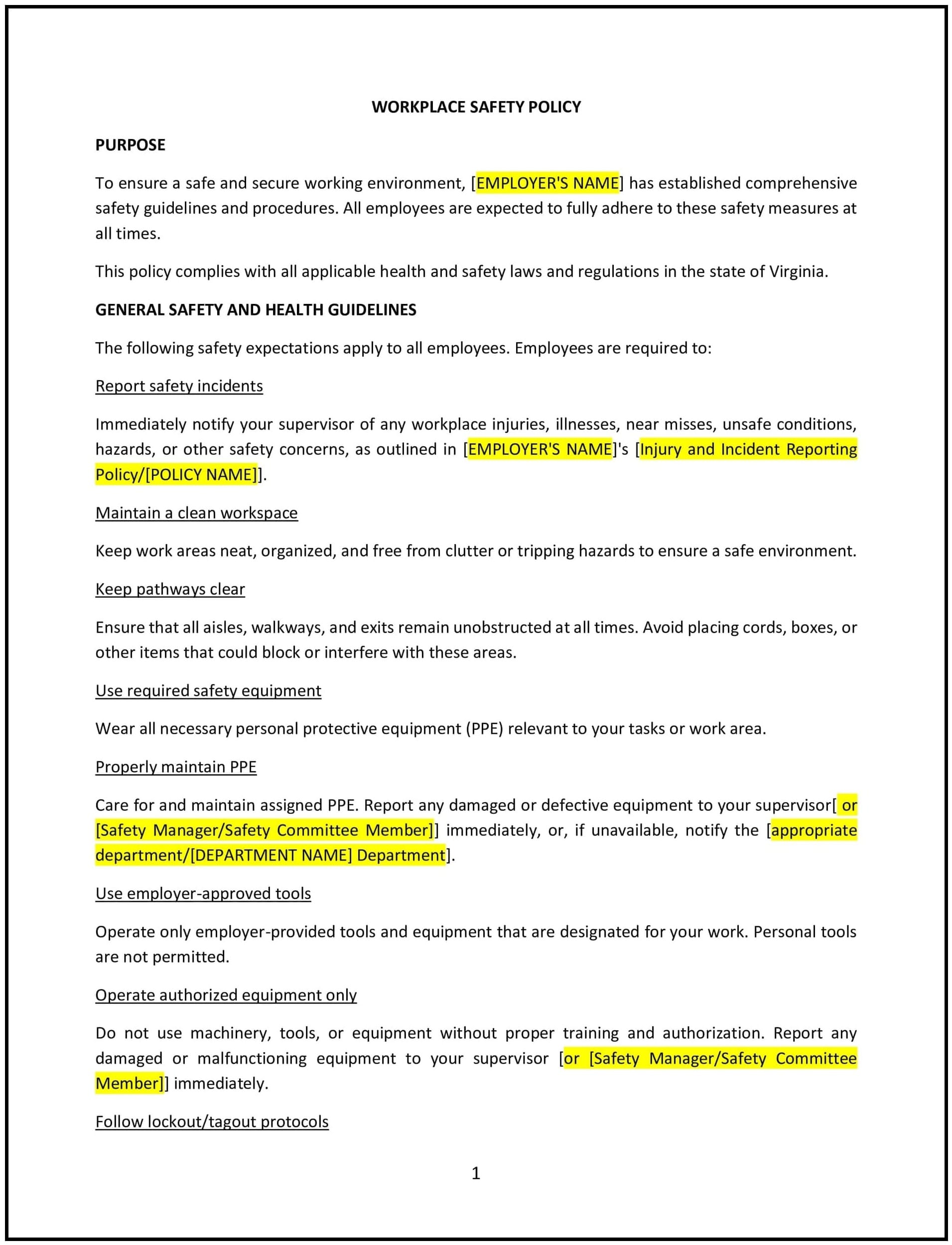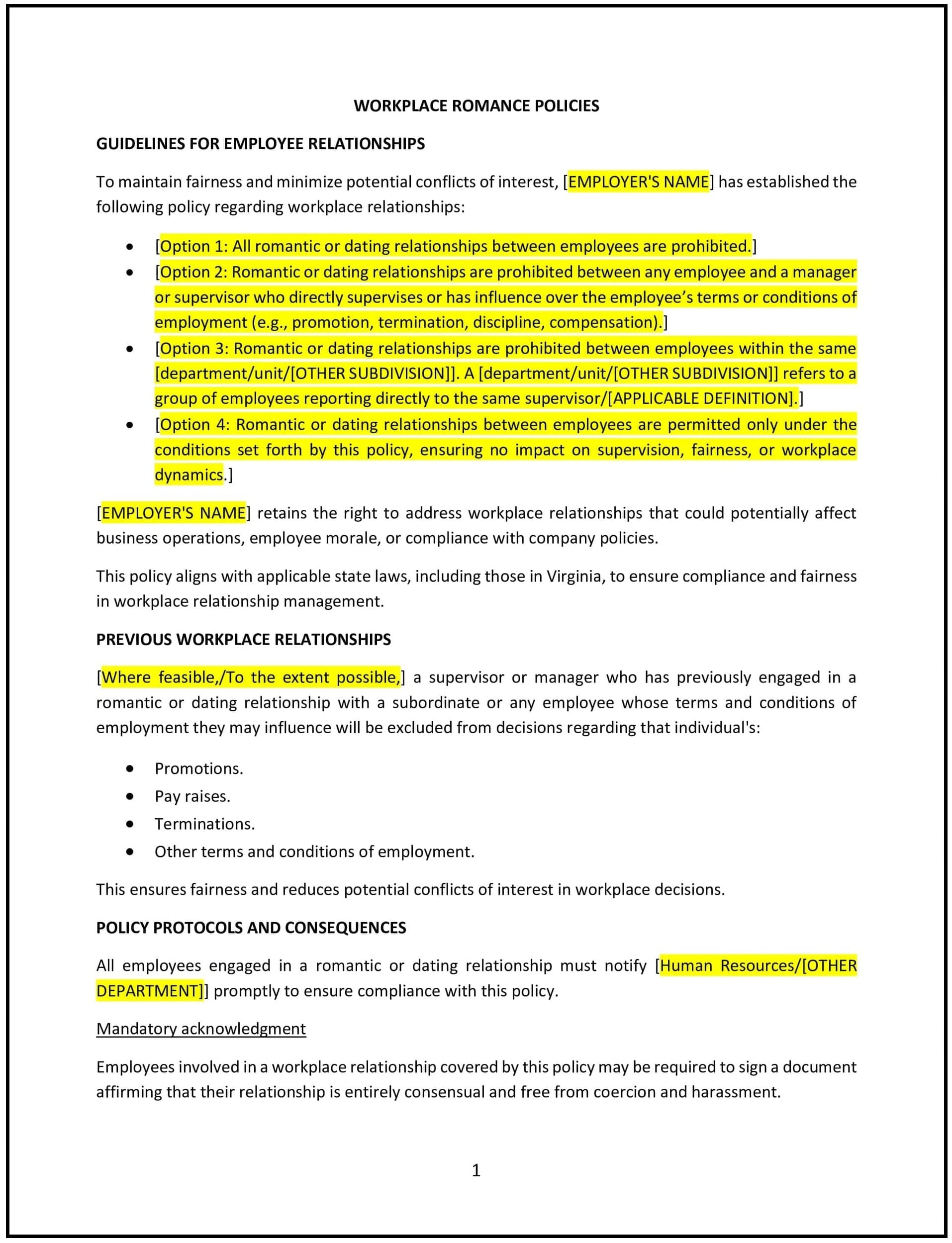Parental and pregnancy leave policy (Michigan): Free template

Parental and pregnancy leave policy (Michigan)
A parental and pregnancy leave policy provides Michigan businesses with clear guidelines regarding employee leave for pregnancy, childbirth, and childrearing. This policy outlines the rights and responsibilities of both the business and the employee, ensuring that employees are supported during significant life events, such as pregnancy and the birth or adoption of a child. It includes provisions for paid and unpaid leave, job protection, and the maintenance of benefits.
By implementing this policy, businesses can ensure that they provide fair and consistent leave options for employees, promote work-life balance, and remain compliant with Michigan state and federal laws related to family leave.
How to use this parental and pregnancy leave policy (Michigan)
- Define eligibility: Specify the eligibility criteria for parental and pregnancy leave, such as the length of employment required (e.g., 12 months), full-time status, or the number of hours worked. Include any requirements for documentation, such as medical certificates or proof of adoption.
- Set leave duration: Outline the length of time employees are entitled to take off for pregnancy and parental leave, as well as any distinctions between paid and unpaid leave. Reference Michigan state laws and the Family and Medical Leave Act (FMLA) for specific guidelines on leave duration and pay.
- Job protection: Ensure that employees are protected from job loss during their pregnancy and parental leave, and clearly state that they are entitled to return to their original job or an equivalent role upon their return.
- Compensation during leave: Specify the compensation employees will receive during parental and pregnancy leave. This can include paid leave, use of accrued PTO or vacation days, or unpaid leave. The policy should also clarify if employees can use any other benefits during leave, such as short-term disability or sick leave.
- Benefits continuation: Address how benefits, such as health insurance, will be maintained during the leave period. Businesses may continue providing benefits at their usual rates, or employees may be required to pay their portion of the premiums during unpaid leave.
- Process for requesting leave: Establish a clear process for employees to request parental and pregnancy leave, including notice requirements, documentation, and the process for submitting leave requests in advance.
- Communication during leave: Provide guidance for how communication should be handled during parental and pregnancy leave, including expectations for staying in touch with HR or management, and any responsibilities the employee may have while on leave.
- Review and update the policy: Periodically review the policy to ensure it reflects any changes in Michigan state laws, federal regulations, or the business’s operational needs.
Benefits of using this parental and pregnancy leave policy (Michigan)
This policy provides several key benefits for Michigan businesses:
- Promotes work-life balance: The policy ensures that employees can take time off to care for a new child or recover from childbirth without worrying about job security, fostering a healthy work-life balance.
- Supports employee retention: Offering parental and pregnancy leave can improve employee morale, increase retention, and attract top talent by demonstrating a commitment to family-friendly policies.
- Complies with legal requirements: The policy ensures that businesses comply with Michigan state laws and federal regulations, including FMLA, which requires certain businesses to provide job-protected leave for family and medical reasons.
- Protects business interests: By providing clear guidelines for parental leave, businesses can avoid disputes related to leave eligibility, job protection, or compensation, and help reduce the risk of legal challenges.
- Increases employee satisfaction: Employees who are supported during pregnancy and parental leave are more likely to feel valued and respected by their employer, contributing to higher job satisfaction and loyalty.
Tips for using this parental and pregnancy leave policy (Michigan)
- Communicate the policy clearly: Ensure that employees are fully aware of the parental and pregnancy leave policy by including it in the employee handbook, during onboarding, and through regular reminders about family leave benefits.
- Educate managers and HR staff: Provide training for managers and HR personnel to ensure they understand the details of the policy, including employee rights, leave procedures, and the need to maintain confidentiality.
- Support employees during the transition: Offer support to employees before, during, and after parental leave, including helping them plan their leave and providing options for transitioning back to work, such as flexible schedules or part-time arrangements.
- Monitor leave requests: Track parental and pregnancy leave requests to ensure compliance with the policy and maintain accurate records for future reference, ensuring consistency and transparency in the process.
- Review the policy regularly: Regularly review and update the policy to stay compliant with changes in Michigan state laws, federal regulations, and evolving business practices.
Q: Who is eligible for parental and pregnancy leave?
A: Employees who have been with the business for a certain period (e.g., 12 months) and have worked a specified number of hours are typically eligible for parental and pregnancy leave. The policy should outline the specific criteria for eligibility.
Q: How long can employees take off for pregnancy and parental leave?
A: The duration of parental and pregnancy leave varies depending on eligibility and state and federal regulations. Typically, FMLA provides up to 12 weeks of job-protected leave. The policy should clarify whether the business offers paid leave or unpaid leave and the total duration of leave allowed.
Q: Will employees be paid during pregnancy and parental leave?
A: The policy should specify whether employees will receive paid leave, whether they can use accrued paid time off (PTO), or whether the leave is unpaid. The business may choose to offer paid leave or allow employees to use other benefits during their leave.
Q: How can employees request parental or pregnancy leave?
A: Employees should submit a formal leave request, along with any required documentation, such as medical certificates or adoption papers. The policy should specify how far in advance the request should be made and the process for submitting leave requests.
Q: What happens to employee benefits during parental or pregnancy leave?
A: The policy should outline whether employee benefits, such as health insurance, will continue during leave and whether employees are responsible for paying premiums while on unpaid leave. This should be in line with Michigan state laws and the business's benefits structure.
Q: Can employees return to their job after parental or pregnancy leave?
A: Yes, employees are generally entitled to return to their original job or an equivalent position upon their return from parental or pregnancy leave, as outlined under Michigan state law and federal regulations such as FMLA.
Q: How often should the parental and pregnancy leave policy be reviewed?
A: The policy should be reviewed regularly, at least annually, to ensure compliance with any changes in Michigan state laws, federal regulations, and the business’s evolving needs.
Q: Can employees take additional time off after their parental leave ends?
A: Additional time off may be allowed based on the business’s leave policies or Michigan state laws. Employees may be able to use vacation time, sick leave, or other benefits, depending on the business’s policy and the situation.
This article contains general legal information and does not contain legal advice. Cobrief is not a law firm or a substitute for an attorney or law firm. The law is complex and changes often. For legal advice, please ask a lawyer.


